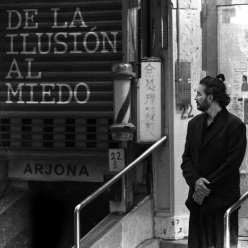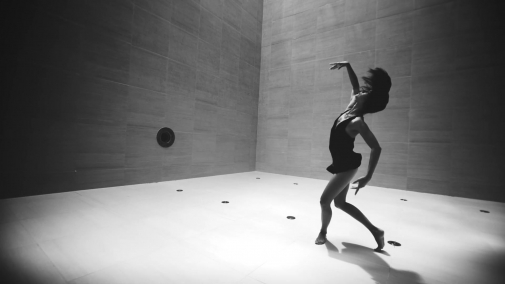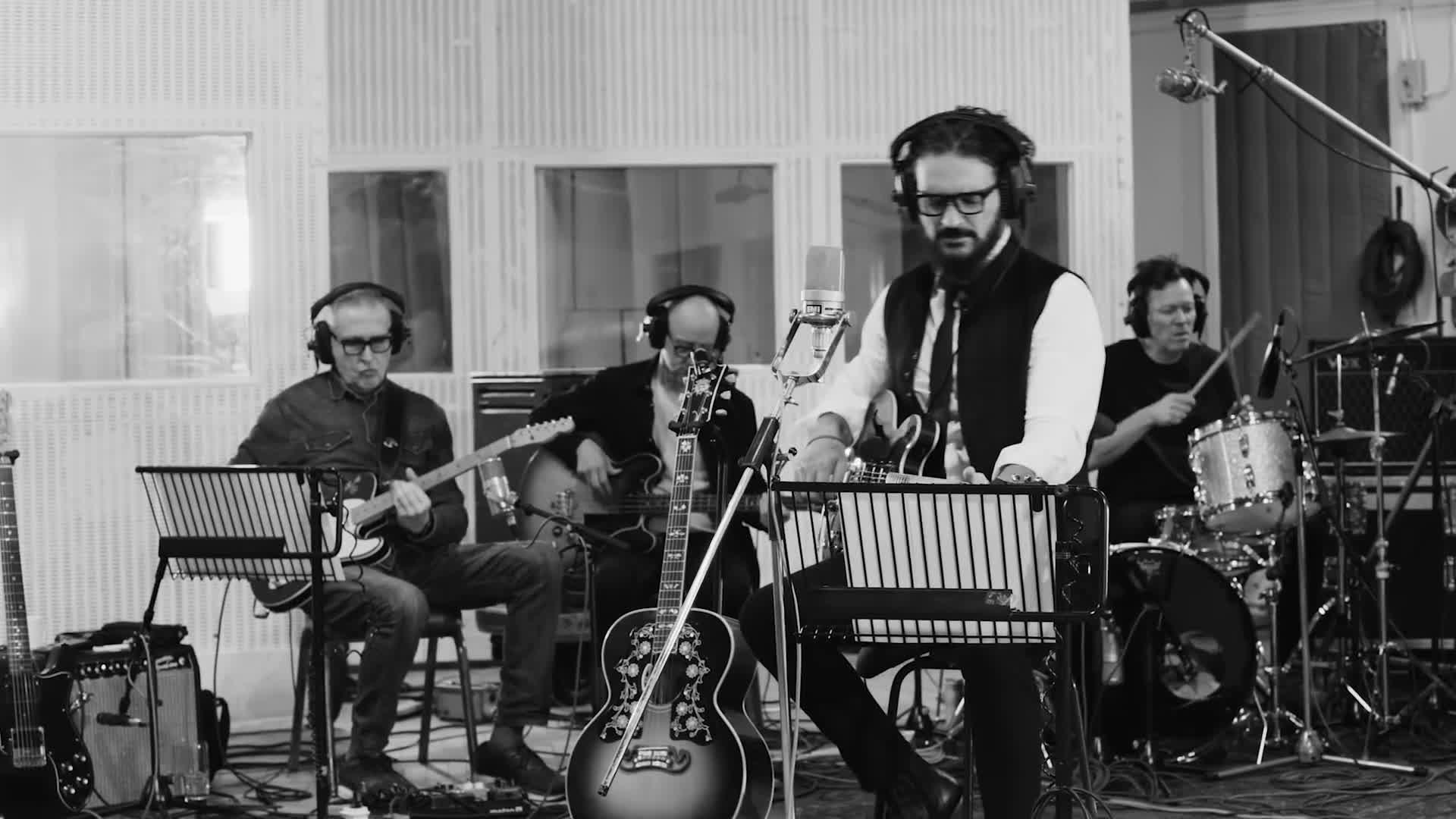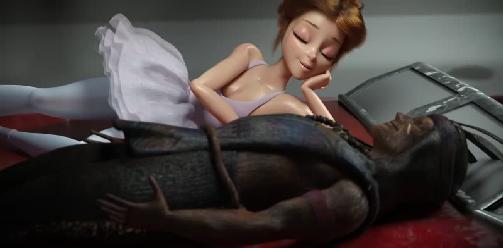Biography
Edgar R. Arjona Morales (born 19 January 1964), known as Ricardo Arjona (Spanish pronunciation: ), is a Guatemalan singer-songwriter. Arjona is one of the most successful Latin American artists of all time, with more than 80 million albums sold.[1] He is often called El Animal Nocturno (The Nocturnal Animal),[2] thanks to his breakthrough success with his fourth studio album which bears the same name. His music ranges from ballads to Latin pop, rock, pop rock, Cuban music, and more recently a cappella performances and a mixture of Tejano music and Norteño music, and other Afro-American and Latin sounds. Arjona is noted for his lyrical style, and often addresses topics such as love, sexuality, violence, racism and immigration.
As of 2016, Arjona had released sixteen studio albums,[3] one live album, nine compilation albums and forty-three singles. Four Arjona albums reached number one on the Billboard Top Latin Albums, and ten reached number one in Argentina. Four albums had charted on the Billboard 200. Four singles had reached number one on the Billboard Latin Songs chart and seven had done the same on Latin Pop Songs. His work earned him numerous awards and accolades, including one Grammy Award, one Latin Grammy Award, the "Latin Heritage" Award[4] as well as awards from the American Society of Composers, Authors and Publishers; a silver and golden torch and two silver seagulls from the 2010 Viña del Mar International Song Festival, two Billboard Latin Music Awards, and a "Latin Trajectory of the Year" Award at the Orgullosamente Latino Awards of 2010.
Contents 1 Early years and personal life 2 Sports career 3 Music career 3.1 1980s: Beginnings and early breakthrough 3.2 1990s: International breakthrough, Si El Norte Fuera El Sur and Sin Daños a Terceros 3.3 2000–2005: Galería Caribe, world tour, Santo Pecado, hiatus and Adentro 3.4 2006–2007: Adentro Tour and Quién Dijo Ayer 3.5 2008–2010: New label, Quinto Piso, world tour and Poquita Ropa 3.6 2011–13: Independiente, Metamorfosis and world tour 4 Music and style 5 Discography 6 Awards and nominations 7 See also 8 References 9 External links Early years and personal lifeEdgar Ricardo Arjona Morales was born on 19 January 1964, in Jocotenango, Guatemala, to parents Ricardo Arjona Moscoso and Mimi Morales de Arjona. He spent most of his childhood in Guatemala City, where he began his musical instruction.[5] At age twelve, he participated in the contest "Festival Infantil Juventud 74" with "Gracias al Mundo", a song composed by his father, finally winning the event.[6] Although he initially enrolled in architecture and engineering at the Universidad de San Carlos de Guatemala (USAC), he graduated with a degree from the School of Communication Sciences.[7] In the city of Buenos Aires, Argentina, he met Puerto Rican Leslie Torres and had two children with her: Adria and Ricardo. They separated in 2005. As of 2010, Arjona was dating Venezuelan model Daisy Arvelo, with whom he has a child.[8]
Sports careerArjona was a talented basketball player who played for Leones de Marte and TRIAS.[9] He toured Central America as a member of the Guatemala national basketball team. Until recently, he held the record for the most points scored (78) in a single game by a Guatemalan.[10][11] He also taught at a primary school (called Santa Elena III),[7] where he claimed to have spent six hours giving lessons and the rest of the day playing football[citation needed]. This earned him a visit from a Ministry of Education representative, who was sent to evaluate his pupils. The representative found that the students' education was actually above average.[12] In 1988, he became the basketball coach of a boys' school (called Instituto Don Bosco).[7]
Music career 1980s: Beginnings and early breakthroughArjona began his musical career at age 21,[9] when he signed with the now defunct, Guatemalan record label, Discos de Centroamérica, S.A.,[13] and distributed by PolyGram,[14] and released his debut album Déjame Decir Que Te Amo in 1985. The label attempted to portray Arjona as a stereotypical Latin lover.[15] The title track was released as a single, "Déjame Decir Que Te Amo". This album failed to chart, but received moderate praise from critics, with Allmusic awarding it three stars out of five.[16] Because of his negative experience recording the album and its commercial failure, he decided to abandon music to teach school.[7] At age 24, Arjona reversed course and sought the opportunity to represent his country in the OTI Festival with the song "Con Una Estrella En El Vientre".[7] The sessions immediately following this decision produced the song "S.O.S Rescátame".[5] His second studio album, Jesús, Verbo No Sustantivo brought him commercial and critical success across Latin America and the U.S. and became a best-seller in many Central American territories.[5][7]
1990s: International breakthrough, Si El Norte Fuera El Sur and Sin Daños a TercerosArjona started the new decade as a regular in the Mexican telenovela (soap opera) "Alcanzar una Estrella" (English translation: Reaching a Star), which assisted him in becoming a known singer throughout Latin America. After joining Sony Music in 1990 he released Del Otro Lado del Sol,[9] one of his least successful albums. That year, he started composing songs for other artists, such as Yuri's "Detrás de Mi Ventana", for her album Nueva era (1993). The song became a hit, reaching No.1 on the US Hot Latin Songs chart for three weeks in 1994.[17][18] He later covered the song in his compilation album, Trópico (2009), alongside Melina León. Animal Nocturno, Arjona's fourth studio album, was released in 1993. The album contained the hit singles "Mujeres" (No. 6 on Latin Songs) and "Primera Vez" (No. 6 on Latin Songs)[19] and received thirteen platinum and one diamond certifications.[20] Animal Nocturno sold 500,000 copies in 1994,[21] and carried Arjona to fame[22][23] along with his work on the Mexican telenovela Alcanzar Una Estrella, which allowed him to showcase his songwriting and singing skills.[5]
Ricardo Arjona honoured in 2012 by current President of Argentina and then-Buenos Aires city mayor, Mauricio Macri.He confirmed his reputation with the release of his fifth studio album, Historias. The album sold 2 million copies throughout Latin America and received twenty-seven platinum and two diamond certifications,[9] including quadruple Platinum in Argentina.[24] Historias reached No. 43 on Top Latin Albums[25] and included the hit singles "Te Conozco" (No. 3 on Billboard Latin Songs) and "Señora De Las Cuatro Décadas" (No. 7 on Latin Songs).[19] The Allmusic review by Jason Birchmeier awarded the album 4.5 stars stating that "If you were to pick only one Arjona album for your collection that wasn't a greatest-hits compilation, this should be the one. Historias was a career-defining success for Arjona."[26] His fourth and fifth studio albums were the best-selling of his career.[27][28]
In 1996, he released his sixth studio album, Si El Norte Fuera El Sur. This was the first album in which Arjona ventured beyond the theme of love to explore nationalism and globalization, among other sociopolitical topics.[29] Its four singles were "Si El Norte Fuera El Sur" (No. 9 on Latin Pop Songs),[30] whose main theme is the relationship between the United States and Latin America,[31] "Tu Reputación" (No. 18 on Latin Songs, No. 2 on Latin Pop Songs), "Me Enseñaste" (No. 18 on Latin Pop Songs), and "Ella y Él" (No. 24 on Latin Songs, No. 8 on Latin Pop Songs).[19][30] Birchmeier awarded the album 4.5 stars stating "All in all, it's Arjona's third classic album in a row, each distinct from its predecessor."[32] Billboard named it the Rock Album of the Year in 1997.[31] Si El Norte Fuera El Sur received multiple Platinum certifications in the United States[33] and Argentina.[24]
In 1998, he released his seventh studio album, Sin Daños a Terceros. Terry Jenkins from Allmusic, on his review of the album, awarded it 4 stars, writing that "Sin Daños a Terceros continues Ricardo Arjona's streak of accomplished, affecting albums that spotlights both his melodic skills and his sharp social consciousness."[34] His fourth consecutive album to receive critical success, Sin Daños a Terceros also enjoyed commercial success, debuting at No. 6 on Top Latin Albums, the first to reach the top 10,[25] and reaching No. 3 on the Billboard Latin Pop Albums chart.[35] It contained the hit singles "Dime Que No" (No. 6 on Latin Songs, No. 3 on Latin Pop Songs), and "Mentiroso" (No. 22 on Latin Songs, No. 5 on Latin Pop Songs).[19][30] The album received multiple Platinum certifications from the United States[33] and Argentina.[24] More than 700,000 copies were sold.[36]
On 5 December 1998 and in front of a live audience of more than 100,000 people at the Hippodrome of Guatemala City, Arjona recorded his first live album, the 1999 release Vivo.[20] The album was moderately successful, certified Gold in Mexico and Platinum in the United States and Argentina. It produced the hit "Desnuda", which became his first No. 1 on the Billboard Top Latin Songs chart.[19] As of December 2005, Vivo had sold 243,000 copies in the United States, his best-selling album there as of that date.[37]
2000–2005: Galería Caribe, world tour, Santo Pecado, hiatus and AdentroArjona's eighth studio album, Galería Caribe was preceded by the single "Cuándo", which became a commercial success and reached No. 1 on both Top Latin Songs and Latin Pop Songs.[19][30] The singer commented that the album consumed twelve months and that before starting, he "had more friends."[38] He also mentioned he had "lived in love with Caribbean culture and music since my childhood."[38] Birchmeier awarded the album 3 stars stating "All in all, Galería Caribe is a curious entry in Arjona's catalog that most fans can overlook without missing much."[39] The album became his first to chart on the Billboard 200, peaking at No. 136, while charting at No. 1 on Top Latin Albums and Latin Pop Albums.[25][35][40] It was awarded Platinum certification in Mexico,[41] Argentina[24] and the US.[33] Its three singles were "Lo Poco Que Queda De Mi"; "Mesías", which reached No. 19 on Top Latin Songs and No. 11 on the Latin Pop Songs chart, and "A Cara O Cruz", which reached No. 28 on Latin Pop Songs.[19][30] To promote the album, which sold more than one million copies, Arjona embarked on his Galería Caribe Tour, which began in Mexico in 2000 and finished in 2001.[38][42][43]
Fans and critics noted connections between the lyrics of "Mesías" and the September 11 attacks on the World Trade Center, resulting in an FBI investigation. "Mesías" A sample of "Mesías", displaying the first chorus of the controversial song, investigated by the FBI.[44] Problems playing this file? See media help.





